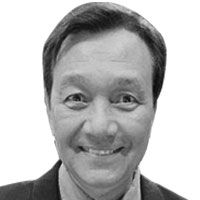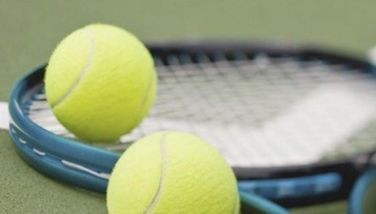Wushu bets aim for medal haul

October 6, 2002 | 12:00am
It’s gold or bust for the Philippine wushu team at the 14th Asian Games in Busan.
Wushu Federation of the Philippines (WFP) secretary-general Edwin Pimentel told The STAR the other day the team, made up of seven males and three females, is ready to go for gold when the Chinese martial arts competitions reel off at the 1,764-seat Dongseo University Minseok Sports Center on Oct. 10.
There are 11 golds at stake in the sport that was introduced in the Beijing Asian Games calendar in 1990. The eight golds for males are in the five weight divisions of sanshou (full-contact)–52, 56, 60, 65, and 70 kilograms, changquan three events, taijiquan two events, and nanquan three events. The three golds for females are in changquan three events, taijiquan two events, and nanquan three events.
Pimentel said the Philippine team has trained long and hard for the Asiad. "Our shanshou fighters trained four months in China and the others, two months, also in China," noted Pimentel, a 32-year-old Beijing Asian Games veteran. "We’ve competed in several international tournaments so we’re prepared. In the last Southeast Asian (SEA) Games, we won four golds. We’ve also won in the World Championships. But we still have to win a gold in the Asian Games."
Pimentel explained that a gold in Busan is a lot more difficult to bag than in the World Championships. "For instance, in changquan, you must excel in three separate events for just one gold," he continued. "We like our chances in sanshou. China, of course, is the world power in sanshou but there are certain weight divisions that the Chinese will not compete in. There are eight events for males and a country is permitted only seven entries. South Korea will also be tough in sanshou because the host country usually has a big advantage in influencing the judges’ decision. But our boys are ready."
Sanshou is a full-contact martial art where competitors duel head-to-head and are allowed to kick, punch, throw, and wrestle.
The country’s sanshou bets are Edward Folayang (65 kg.), Rexel Nganhayna (56 kg.), Marvin Sicomen (52 kg.) and Joseph Pasiwat (60 kg.).
Pimentel said the four sanshou fighters are from the Mountain Province where wushu has a large population of practitioners. "Our Cordilleras chapter is very active," added Pimentel. "The Igorots are proficient in the martial arts like kung fu and Muay Thai. Our chapter president Ching Tong Chai used to be a movie action star during the Bruce Lee era of Ramon Zamora and Rey Malonzo. So we recruited all our sanshou fighters from the Mountain Province."
The WFP was established in 1987 and has chapters in the Cordilleras, Cagayan de Oro, Cebu, Bacolod and Metro Manila. Pimentel said four years ago, the WFP counted only about 500 wushu competitors but now, the number has grown to at least 1,000. He estimated 10,000 practitioners, including taichi early morning risers, in the country.
The other male wushu artists in the Philippine squad are Mark Rosales, Bobby Co and Arvin Ting.
Rosales, 28, pocketed a gold in cudgel at the World Championships in Italy in 1997 and a silver at the SEA Games in Kuala Lumpur last year. The 5-7 Caloocan City native brought back a silver in the changquan three events from the 1998 Bangkok Asiad and is entered in the same category in Busan.
In Bangkok, Rosales scored a total of 27.78 points and lost to Chinese gold medallist Wu Gang who tallied 28.34.
The changquan three events combined or "long fist" is derived from the martial arts style in northern China where practitioners are usually tall. Competitors use their bare hands, a broad sword and a cudgel in the three events.
Co, 29, is competing in the taijiquan two events. The 5-5 Mapua Institute graduate, who idolizes Jet Li and Michael Jordan, captured a gold at the 1997 SEA Games.
Taijiquan’s two events are with and without a sword. It is essentially taichi, a slow motion type of expression where the accent is on continuous smooth, graceful, and circular body rhythm using natural power and calm breathing. Wushu is a generic term for taijiquan and other ancient traditional Chinese martial arts.
Ting, 16, is entered in the changquan three events like Rosales. Ting and Co bagged bronzes at the last SEA Games.
The three female competitors are Janice Hung, May Lim, and Lily So. Pimentel said he expects medals from the trio, too.
Hung is vying for top honors in the changquan three events. Lim is in the taijiquan two events. So is listed in the nanquan three events.
Nanquan traces its origins from southern China where practitioners are traditionally stout, squat, and stocky. The three events are nanquan (bare hand), nantao (straight sword) and nangun (spear). The prefix "nan" is derived from the Chinese word meaning south or southern.
Pimentel said after training in China, the team spent two weeks limbering up in Baguio and arrived in Manila only last Thursday. The athletes left for Busan yesterday with Chinese coaches Yu Zhi Bho and Qian Yuan Zhe. WFP president Julian Camacho and Pimentel will join the team on Monday. Camacho will represent the country in the drawing of lots for sanshou while Pimentel will act as the deputy head judge in the competitions. The weigh-in of the sanshou fighters is scheduled Tuesday.
Pimentel said the squad could’ve been more formidable if only Willy Wang, 18, didn’t suffer an injury while training in China. Wang would’ve competed in the changquan three events.
At the 1990 Beijing Asiad, the Philippines sent only three wushu athletes–including Pimentel–and came home empty-handed in the sport. In 1994, Daniel Go and Richard Ng collected bronzes in taijiquan and nanquan respectively. In 1998, the haul improved to two silvers and two bronzes. If the trend continues, the Philippines should bag at least a gold from wushu in Busan.
"It’s a big challenge," said Pimentel. "It won’t be easy winning a gold. But we hope to do it for our country."
Wushu Federation of the Philippines (WFP) secretary-general Edwin Pimentel told The STAR the other day the team, made up of seven males and three females, is ready to go for gold when the Chinese martial arts competitions reel off at the 1,764-seat Dongseo University Minseok Sports Center on Oct. 10.
There are 11 golds at stake in the sport that was introduced in the Beijing Asian Games calendar in 1990. The eight golds for males are in the five weight divisions of sanshou (full-contact)–52, 56, 60, 65, and 70 kilograms, changquan three events, taijiquan two events, and nanquan three events. The three golds for females are in changquan three events, taijiquan two events, and nanquan three events.
Pimentel said the Philippine team has trained long and hard for the Asiad. "Our shanshou fighters trained four months in China and the others, two months, also in China," noted Pimentel, a 32-year-old Beijing Asian Games veteran. "We’ve competed in several international tournaments so we’re prepared. In the last Southeast Asian (SEA) Games, we won four golds. We’ve also won in the World Championships. But we still have to win a gold in the Asian Games."
Pimentel explained that a gold in Busan is a lot more difficult to bag than in the World Championships. "For instance, in changquan, you must excel in three separate events for just one gold," he continued. "We like our chances in sanshou. China, of course, is the world power in sanshou but there are certain weight divisions that the Chinese will not compete in. There are eight events for males and a country is permitted only seven entries. South Korea will also be tough in sanshou because the host country usually has a big advantage in influencing the judges’ decision. But our boys are ready."
Sanshou is a full-contact martial art where competitors duel head-to-head and are allowed to kick, punch, throw, and wrestle.
The country’s sanshou bets are Edward Folayang (65 kg.), Rexel Nganhayna (56 kg.), Marvin Sicomen (52 kg.) and Joseph Pasiwat (60 kg.).
Pimentel said the four sanshou fighters are from the Mountain Province where wushu has a large population of practitioners. "Our Cordilleras chapter is very active," added Pimentel. "The Igorots are proficient in the martial arts like kung fu and Muay Thai. Our chapter president Ching Tong Chai used to be a movie action star during the Bruce Lee era of Ramon Zamora and Rey Malonzo. So we recruited all our sanshou fighters from the Mountain Province."
The WFP was established in 1987 and has chapters in the Cordilleras, Cagayan de Oro, Cebu, Bacolod and Metro Manila. Pimentel said four years ago, the WFP counted only about 500 wushu competitors but now, the number has grown to at least 1,000. He estimated 10,000 practitioners, including taichi early morning risers, in the country.
The other male wushu artists in the Philippine squad are Mark Rosales, Bobby Co and Arvin Ting.
Rosales, 28, pocketed a gold in cudgel at the World Championships in Italy in 1997 and a silver at the SEA Games in Kuala Lumpur last year. The 5-7 Caloocan City native brought back a silver in the changquan three events from the 1998 Bangkok Asiad and is entered in the same category in Busan.
In Bangkok, Rosales scored a total of 27.78 points and lost to Chinese gold medallist Wu Gang who tallied 28.34.
The changquan three events combined or "long fist" is derived from the martial arts style in northern China where practitioners are usually tall. Competitors use their bare hands, a broad sword and a cudgel in the three events.
Co, 29, is competing in the taijiquan two events. The 5-5 Mapua Institute graduate, who idolizes Jet Li and Michael Jordan, captured a gold at the 1997 SEA Games.
Taijiquan’s two events are with and without a sword. It is essentially taichi, a slow motion type of expression where the accent is on continuous smooth, graceful, and circular body rhythm using natural power and calm breathing. Wushu is a generic term for taijiquan and other ancient traditional Chinese martial arts.
Ting, 16, is entered in the changquan three events like Rosales. Ting and Co bagged bronzes at the last SEA Games.
The three female competitors are Janice Hung, May Lim, and Lily So. Pimentel said he expects medals from the trio, too.
Hung is vying for top honors in the changquan three events. Lim is in the taijiquan two events. So is listed in the nanquan three events.
Nanquan traces its origins from southern China where practitioners are traditionally stout, squat, and stocky. The three events are nanquan (bare hand), nantao (straight sword) and nangun (spear). The prefix "nan" is derived from the Chinese word meaning south or southern.
Pimentel said after training in China, the team spent two weeks limbering up in Baguio and arrived in Manila only last Thursday. The athletes left for Busan yesterday with Chinese coaches Yu Zhi Bho and Qian Yuan Zhe. WFP president Julian Camacho and Pimentel will join the team on Monday. Camacho will represent the country in the drawing of lots for sanshou while Pimentel will act as the deputy head judge in the competitions. The weigh-in of the sanshou fighters is scheduled Tuesday.
Pimentel said the squad could’ve been more formidable if only Willy Wang, 18, didn’t suffer an injury while training in China. Wang would’ve competed in the changquan three events.
At the 1990 Beijing Asiad, the Philippines sent only three wushu athletes–including Pimentel–and came home empty-handed in the sport. In 1994, Daniel Go and Richard Ng collected bronzes in taijiquan and nanquan respectively. In 1998, the haul improved to two silvers and two bronzes. If the trend continues, the Philippines should bag at least a gold from wushu in Busan.
"It’s a big challenge," said Pimentel. "It won’t be easy winning a gold. But we hope to do it for our country."
BrandSpace Articles
<
>
- Latest
- Trending
Trending
Latest
Trending
Latest
Recommended



























